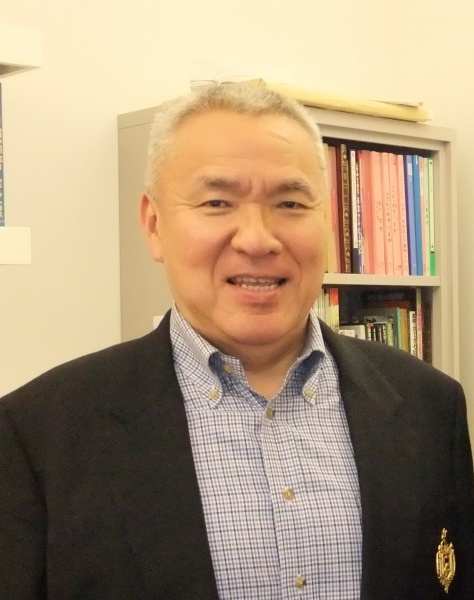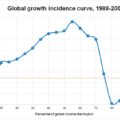“Free and Open Indo-Pacific” under the US-China Conflict: For coexistence of strategic competition and economic cooperation
The Suga Yoshihide Cabinet is the successor to the Abe Administration. Even though the US-Japan axis remains unchanged, the diplomatic and security environment around Japan is becoming increasingly severe against a background of structured conflict between the United States and China. The following discussion is a general overview of the diplomatic issues confronting the Suga Cabinet and the possible paths to take.
(The discussion was held on November 3, 2020, the date of the US presidential election, and the transcript was finalized on November 17.)
Three-way conversation by Takahara Akio (Professor, University of Tokyo),
Nakanishi Hiroshi (Professor, Kyoto University) and
Yoshioka Keiko (senior staff writer, Asahi Shimbun)
― The Suga Cabinet is the successor to the Abe administration, but first, how would you evaluate Abe diplomacy?
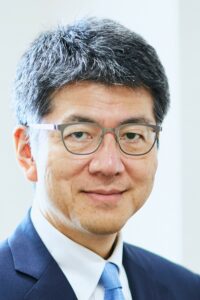
Professor Takahara Akio
Takahara Akio: I think Abe diplomacy is a good example of the significance of a long-term administration. During the second administration alone, Prime Minister Abe visited a total of 80 countries and 176 regions, which is a higher number than ever before, so he was able to address a wide range of diplomatic issues. On a visit to the United States immediately after the inauguration of his second administration, Abe declared that Japan is back, and this was widely accepted through his achievements during his premiership that lasted for 7 years and 8 months.
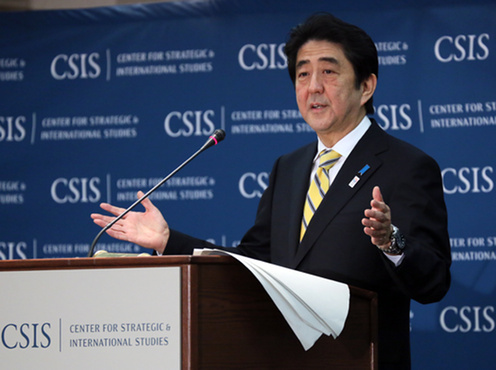
Prime Minister Abe said “Japan is back” in his policy speech at the Center for Strategic and International Studies (CSIS) on February 22, 2013.
Photo: Cabinet Public Relations Office
Nakanishi Hiroshi: I think of Abe diplomacy as two halves with 2015–16 as the dividing line. In the first half, the National Security Council (NSC) was established and the interpretation of the Constitution was changed with regard to the right of collective self-defense, and in September 2015, the Legislation for Peace and Security was created. He laid the groundwork for the achievements of his second administration during the first administration. In August 2015, the Statement on the 70th Anniversary of the End of World War II was announced in succession with the Legislation for Peace and Security. At the time, the point at issue was whether to run with the Kono Statement (1993) or the Murayama Statement (1995), but in the Statement on the 70th Anniversary Abe seemed to reflect on the confusion in the international order without gainsaying the earlier statements. As a result, he put an end to the issue of historical recognition in both domestic affairs and diplomacy. On this basis, he concluded an agreement on the comfort women with the Park Geun-hye administration in Korea, and visited both Hiroshima and Pearl Harbor with President Obama. We can say that these two actions settled the diplomatic issues of Heisei Japan.
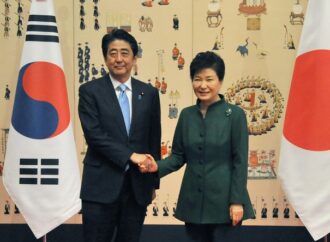 Japan-Republic of Korea Summit Meeting on November 2, 2015 |
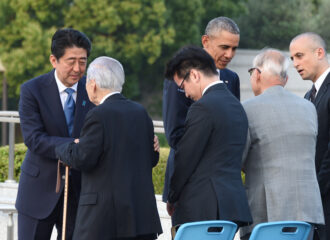 Prime Minister Abe visits Hiroshima with President Obama on May 27, 2016 |
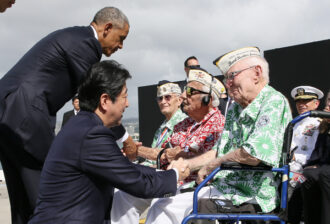 Prime Minister Abe visited the Pearl Harbor Visitor Center on December 27, 2016 |
Takahara: When his Cabinet was inaugurated, some Westerners, in particular, viewed the Abe administration as a historical-revisionist administration. However, after a visit to Yasukuni Shrine, one year after the second Cabinet was inaugurated, he dealt prudently and pragmatically with historical issues, which bore fruit. He contributed to improving Japan’s diplomatic position.
Japan Was Forced to Change How the Country Was Perceived
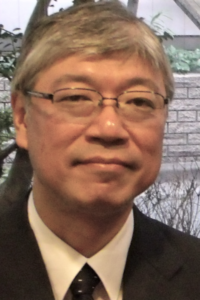
Professor Nakanishi Hiroshi
Nakanishi: On the other hand, when the then-Emperor announced his abdication in the spring of 2016, there emerged, as if in response, a diplomatic image for the post-Heisei era. The United States under the Trump Administration pulled out of the Trans-Pacific Partnership (TPP) after it had been signed, but at Japan’s initiative, the agreement itself took effect as the Comprehensive and Progressive Agreement for Trans-Pacific Partnership (CPTPP, the so-called TPP11). He also proposed the concept of a Free and Open Indo-Pacific (FOIP), and he was able to deliver a concept of a global and regional order that was aligned with the new diplomatic environment. Relations with China were also gradually improving and had recovered to the point where President Xi Jinping was scheduled to make a state visit in April 2020, which has now been postponed due to the COVID-19 pandemic.
Takahara: He handled the relationship with the US and China well. In particular, while many countries were confused about how to interact with the Trump administration, Japan was regarded as the only country doing well. Even though Japan-China relations were at their worst at the start of the administration, Abe gradually gained a foothold that peaked with the visit to China in 2018. Compared to other countries, we can say that he achieved good results.
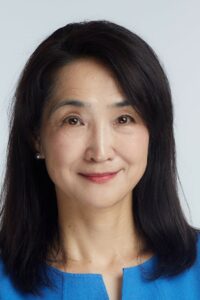
Yoshioka Keiko, Senior Staff Writer, Asahi Shimbun
Yoshioka Keiko: There is some context to the improvements in Japan-China relations in both countries. China needed Japan more as the US-China confrontation intensified under the Trump administration. Looking at Japan from the outside, Japan was forced to correct how it was perceived during this time and mainly in Asia. The seven years and eight months of the Abe administration coincided with a period when China strengthened its political and economic influence as a world power. Viewed in terms of economic size alone, China’s GDP was only about 30% higher than Japan’s when the second Abe administration was inaugurated, but now it is nearly three times as large.
What this means for East Asia is that there is no either-China-or-Japan concept in the region; rather, everyone wants to get along well with both. However, at first, the Japanese government did not fully share this impression and there was a strong sense of economic rivalry with China in the first half of the Abe administration. As a result, Japan’s aggressive approach to infrastructure exports including the Thai bullet train, which has not progressed by even a single millimeter, did not achieve the expected results because they tried to compete on an equal footing with China. There were also some ODA projects where Japanese corporations could not keep up with the costs.
― Has anything changed in this regard?
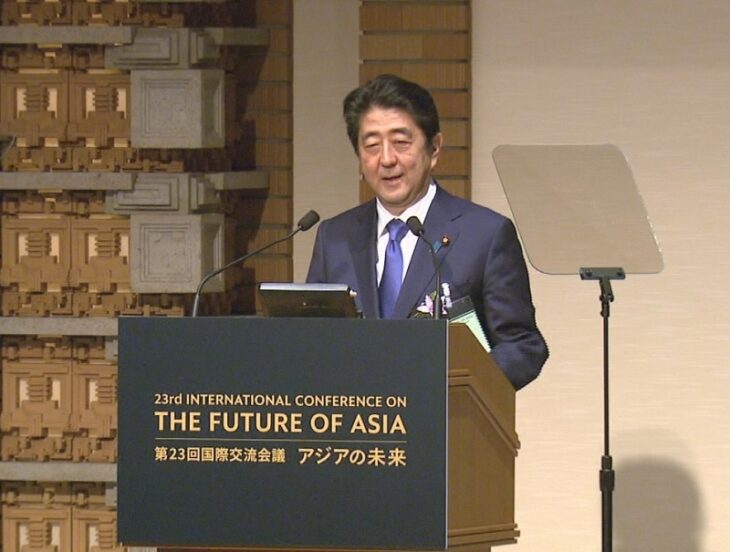
Prime Minister Abe said “I would expect that the ‘One Belt, One Road’ initiative will fully incorporate such a common frame of thinking, and come into harmony with the free and fair Trans Pacific economic zone, and contribute to the peace and prosperity of the region and the world. Japan is ready to extend cooperation from this perspective” in his speech at the Banquet of the 23rd International Conference on The Future of Asia held on June 5, 2017.
Photo: Cabinet Public Relations Office
Yoshioka: I think that Japan is gradually adjusting to accommodate the option of choosing both Japan and China in the region. To speak plainly, Japan’s message that the FOIP and the Belt and Road Initiative (BRI) can coexist has made Southeast Asia more sympathetic to FOIP. Freedom and openness are both important values, but I think emphasizing openness will further deepen understanding.
Takahara: That’s an important point. In the context of the US-China confrontation, Southeast Asia and the South Asian countries are likely to associate the concept of Indo-Pacific, which is advocated by Japan and strongly promoted by the United States, with the tendency to form a network that encircles China. Also, in a region where many countries have issues with internal democracy and human rights, the prominence of “free” on its own could jeopardize not only China, but also the legitimacy of their own regimes. Nevertheless, it is my interpretation that the statements by the Abe administration after 2017 saying that Japan could conditionally cooperate with the BRI were a decisive factor behind, for example, the statement by the ASEAN on cooperation with FOIP. This has made it easier for the Asian countries to say that they accept FOIP. For Japan, it was a policy decision that not only improved relations with China, but also greatly expanded the potential for diplomacy.
Nakanishi: When the Free and Open Indo-Pacific was first announced, it was referred to as a strategy, but before long it was changed to initiative and now even that term has disappeared. The situation also reveals the difficulty of Japan’s position …
Takahara: Yes, that is true. When Japan changed the wording from strategy to initiative, many Asian countries interpreted this as a clear indication of an approach that focused on economic relations rather than strategic competition. Relations between the US and China have both competitive and cooperative aspects. The Trump administration leaned toward competition, but Japan had a different focus.
Nakanishi: These days countries worldwide are concerned about their own position in the confrontation between the US and China. In this context, the FOIP, which excludes neither the US nor China, is a concept that could have a strong presence as a global vision from the perspective of renewing the international order. On the other hand, it is a good slogan, but there is not much content. Fleshing it out will be a challenge for both the Suga administration and the Biden administration.
― Will the American views on the FOIP or their underlying views on China and Chinese policies change?
Nakanishi: Even if the Biden administration is inaugurated, the United States is unlikely to return to a line toward China that focuses on engagement, but the distance between the US and China may change due to areas of policy such as climate change issues and COVID-19 countermeasures.
Takahara: For a few years now, the administration, Congress, and think tanks in Washington have taken a hard line against China. Some think tanks are starting to express regrets about having gone too far and that cooperation with China is also necessary. I sense some signs of change.
― What about India?
Yoshioka: Even if the bilateral relationship between Japan and India is good, it is somehow difficult to expect India to play a role in a cooperative international order. Changing the Indian preference for more independent paths as seen in trade talks and negotiations with international organizations won’t come easily. On the other hand, the border conflict between India and China has worsened. Both sides will probably avoid any decisive conflict, but in recent years relations that set aside distrust in the security field and prioritized economic gains have turned to conflict.
Nakanishi: It is a difficult situation with the current Modi administration as relations with China and Pakistan are deteriorating and the focus on the economy is not going well. India did not participate in the Regional Comprehensive Economic Partnership Agreement (RCEP) either. I am under the impression that India continues to be the question mark in the basic strategy for FOIP. How to engage with India is a big challenge for both Japan and the United States.
How to Discuss Values in Diplomacy
― How to deal with the issue of freedom or the issue of values in diplomacy is also important.
Yoshioka: As a journalist and as a human being, I hope for a world that takes freedom, democracy, and human rights seriously, but the reality is that many countries in Southeast Asia have a high affinity with authoritarianism. There is not only the Rohingya issue in Myanmar, which commanded the attention of the international community, but there are human rights issues in many countries. There is Cambodia, Laos with its one-party rule, even the Philippines, which is a democracy, has seen an official toll of 5,000 casualties of the crackdown on drugs by the Duterte administration.
If the values of human rights and democracy are a condition for cooperation, some countries will find it difficult to join the circle. Conversely, if you have one set of standards for China and another for Southeast Asia, such double standards will be used to eliminate China.
Nakanishi: There are many gradations of freedom and democracy. Competition tends to be more strongly emphasized if you use the categories of authoritarianism and democracy. In reality, the line between democracy and authoritarianism is not as clear as it sounds. Even the United States presidential election shows some elements of authoritarianism. Even democratic countries may have authoritarian elements. Conversely, it is impossible to completely ignore the will of the people even in authoritarian countries, so it is possible to incorporate democratic elements in some form. In terms of political practice, it is not prudent policy to simply draw a line between authoritarianism and democracy and emphasize the conflict between the values.
Even countries that respect political freedom in a democratic system are now questioning the nature of media and the rise of populism. On the issue of values, we must first tackle domestic issues, and we should be cautious about using the state of democracy in other countries as a criterion for diplomacy.
― But that won’t solve the human rights issues around the world, will it?
Nakanishi: Of course, as Yoshioka pointed out earlier, we must use various opportunities and channels to criticize a range of issues including human rights, or China’s approach to Hong Kong and the Xinjiang Uyghur Autonomous Region. But if discussions are categorized according to the political regimes, far from improving the situation, that strategy will probably increase our enemies. This is something we should keep in mind.
Takahara: I agree. It is important to say what must be said separately from the discussion about the system. At the Third Committee (Social, Humanitarian and Culture) of the UN General Assembly, which convened on October 6, 2020, many countries, mainly among emerging and developing countries, expressed their support for China with regard to the issues of Hong Kong and the Xinjiang Uyghur Autonomous Region. This is not only because they want aid from China. The context is that the situation with international human rights generally has not improved while the principle of opposing intervention in another country is used as a shield. Japan should clearly communicate the importance of human rights and the dignity of individual human beings.
Yoshioka: Such messages are not only important for China, but also to encourage the people who are oppressed. The reality is that the United States is turning to unilateralism and no longer providing international public goods as its national power is in relative decline. China is stepping in to fill the hole in the Chinese style, so developing countries are starting to support China. Rather than focusing on competing with China on infrastructure exports, Japan should focus on creating fair rules, nurturing people, and protecting lives.
Potential for Diplomacy Using the RCEP Multilateral Framework
― The RCEP is an agreement between fifteen countries. What is its significance? What do you think of Japan’s consistent approach to developing free trade networks such as the TPP?
Yoshioka: The biggest significance of the RCEP is that China and Japan, the countries with the second and third largest GDP in the world, have concluded an economic agreement within a framework of multi-lateral cooperation centered on the ASEAN. The Japanese business community has long called for a Free Trade Agreement (FTA) between Japan and China, but it has been difficult out of consideration for the United States. Among the RCEP members, Japan-China and Japan-Korea are the main pairings without an FTA, which has now been established by means of a multilateral framework. Although the standards of data handling and liberalization fall short of the TPP and other agreements focused on developed countries, lowering tariffs with China has practical benefits for Japan. For Asia as a whole, the significance is great in the sense of stabilizing the economic environment.
Via the RCEP, China has also indicated its intention to join the CPTPP in the future. We should welcome them if they really follow the rules of the TPP.
― What was your sense when you covered the story?
Yoshioka: During many years of covering the RCEP, I often heard from government officials in Southeast Asia that the RCEP agreement depended on Japan because Japan insisted on the participation of India, which announced its intention to withdraw from the negotiations a year ago. The ASEAN already has an agreement with India, so there was little commitment to India, which staked its own claims in the negotiations. ASEAN countries were tired of the lengthy negotiations and were expecting an agreement. Pulling together fifteen countries while leaving room for participation by India was a good achievement. Had the negotiations dragged on longer, Japan would likely have been undermined. In the future, we will be able to work with Australia and other countries to think about ways to use the RCEP platform for regional cooperation.
Takahara: Generally, the economic diplomacy of the Abe Cabinet went rather well. Especially with CPTPP, Japan’s leadership after the United States withdrawal was highly valued worldwide. It was noted with keen interest that Japan is capable of such initiatives. Similarly, the conclusion of the Japan-EU EPA contrasted sharply with the difficult negotiations between the US and EU under the Trump administration.
Nakanishi: Both the CPTPP and the RCEP form some parts of the vast Indo-Pacific area as structural foundations. Now is the time to build on the foundations as pillars and walls, so that both the US and India would participate in these frameworks in the future.
― There are also concerns about the future of trade negotiations between the US and China.
Takahara: We don’t know how the Biden administration will deal with this yet, but there are some reformist and international people within the Chinese leadership who are enthusiastic about free trade, and who believe that domestic economic reforms should be promoted while taking advantage of external pressures from the United States. On the other hand, the opposing conservatives and nationalists are also strong. This tug-of-war was fully displayed in the confusion toward the end of the negotiations with the United States in April-May 2019. The Chinese backtracked just before both governments were supposed to sign the 150-page agreement. The competition for initiative in China has continued since the days of President Hu Jintao and Premier Wen Jiabao, but for us, the important point is how to support the international faction.
Nakanishi: On the other hand, nationalism within China was heightened by the pressure imposed by the Trump administration in economic and technological areas, and by discrimination against Chinese people in the West over COVID-19. At the fifth plenary session of the 19th Central Committee of the Communist Party of China that took place recently (October 26–29, 2020), the keyword for economic policy was “dual circulation,” which should be seen as a compromise between the reformist and internationalist factions and the ethnic and conservative factions.
Takahara: With the strengthening of ideology in domestic politics and, above all, the lack of economic cooperation with the United States, the Xi administration has no choice but to insist on self-reliance. However, it is practically impossible to carry it out to the full. Dual circulation means putting more weight on increasing domestic demand while continuing with the opening of the economy to the outside world. It seems they are trying to get through the difficulties and heighten the image of the Xi administration by dressing up ordinary policies with new words.
― What about the impact of the economic decoupling of the United States and China?
Yoshioka: Japanese companies have recognized the importance of economic security for some time. In terms of mindsets, Japanese companies differ from companies in the US and Europe. The latter are rule-based and try to advance their business without second-guessing the government, but Japanese companies are risk-averse and where the line is not clear they tend to avoid transactions and wilt away. Even though US companies are judging the situation to be safe and doing business in China amid the US-China conflict, we have seen cases where Japanese companies refrain from dealing with US companies in China. It is difficult for Japan as well as Australia and Asian countries to completely sever their economic ties and interdependency on China. This is why it is important to create rules for economic security.
― The reorganization of supply chains is under discussion around the world.
Yoshioka: On a recent visit to Asia, Prime Minister Suga stressed the importance of dispersing supply chains to Southeast Asia. This is a sound argument. In terms of strategy, the Chinese government is trying to make other countries economically dependent on China and to use the dependency as a diplomatic resource. For this reason, Prime Minister Suga’s remarks also attracted attention in China. In terms of economic scale, however, the whole of Vietnam and Wuhan city are on the same scale, and Hubei Provence is larger than Thailand. Once the networks have been laid out for a huge market, the cost of rebuilding the supply chains is enormous. It seems that many companies are looking at the situation.
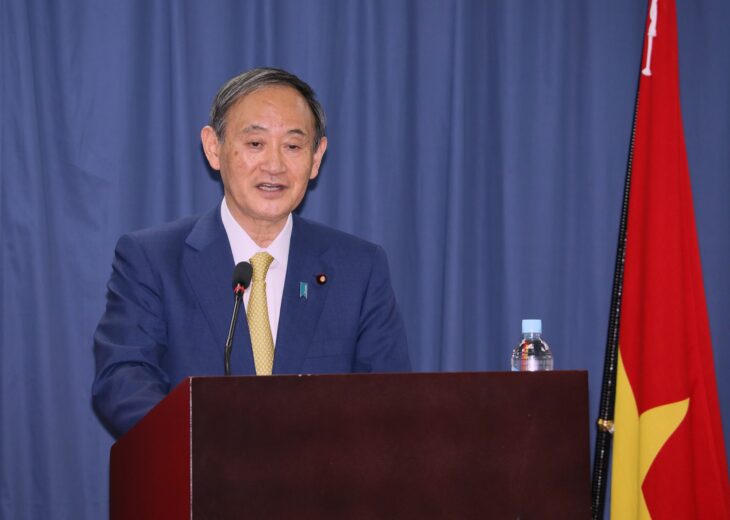
Prime Minister Suga said “Japan will further strengthen cooperation with ASEAN to increase the resilience of supply chains and build economies in Asia that are resilient to crises” in his speech at the Vietnam-Japan University in Hanoi, Viet Nam, on October 19, 2020. Photo: Cabinet Public Relations Office
Nakanishi: At the moment, the decoupling of US and China is the theme with the highest degree of uncertainty in the political and economic arena. It is one thing to target individual companies like attacking Huawei Technologies, or putting pressure on TikTok, but surely it isn’t possible to comprehensively decouple the Chinese economy.
Takahara: Earlier, I alluded to the possibility of a change in US policy toward China. Other countries are not able to commit to a hardline approach and then there is the loss of the economic benefits. According to a survey by the American Chamber of Commerce in Shanghai, last year 74% of US companies said they would not switch their investment plans from China to another country. This year the figure rose to 79%. 92% said they were not considering withdrawal. A speech by Vice President Mike Pence in 2018 made headlines for its scathing criticism of China, but the following year, he said “Absolutely not” when asked if the Trump administration would decouple the US and China. Far from decoupling, the Phase One US-China agreement signed in early 2020 contained details on how to open up the Chinese market to US companies. In this regard, I am concerned about the somewhat arbitrary or misleading reporting and analyses that I see more often than before.
Nakanishi: Personal networking is even more difficult. Chinese researchers, exchange students, and workers in both the United States and China are already key players in their own countries. It is impossible to treat them all as potential Chinese government spies. How to draw the line will be a thorny issue for the Biden administration and the international community in the 2020s.
― What kinds of measures would be effective?
Nakanishi: Rule-making is fundamental. It would be effective to create a mechanism for sharing a certain level of trust such as the Data Free Flow with Trust (DFFT) that former Prime Minister Abe talked about at the 2019 Davos Forum and the G20. It is true that the West has connived with the Chinese side and tolerated asymmetrical responses in the conventional engagement policy with China. It will likely be a step by step process of creating a rational framework and maintaining relations on condition that the Chinese government complies with the rules.
The Climate Change Issue Tests the True Values of Japan
― How will the United States change its approach to pending issues when the new administration is inaugurated?
Nakanishi: The United States is still split over the domestic affairs, which is a constraint on diplomatic leadership. Even if Biden takes over, his administration will hardly be able to spearhead the creation of an international order.
Takahara: In light of China’s willingness to change the status quo by force, there is no other way for Japan than to strengthen security cooperation with the United States and help the new US administration understand the importance of the alliance.
Nakanishi: With regard to the international order, Japan must leverage the position of the Asia-Pacific as the most important partner of the US. While contributing to regional stability, Japan must act prudently to ensure that we do not create dividing lines or decoupling scenarios.
In addition, an order that is adapted to the new era will gradually be built. This includes the expansion of the CPTPP and RCEP, the SDGs agreed at the Osaka G20, and the climate change issue, among others. Cooperation with other countries is essential in all these scenarios, and someone needs to take on the role of leading towards a single direction while coordinating multi-dimensionally with the European countries, or cooperating bilaterally or with the Quad (Japan, US, Australia, India) framework, or with ASEAN. Earlier I mentioned the difficulty of engaging with India, but I cannot imagine dealing with the climate change issue without India, for example.
― On the climate change issue, the Biden administration has pledged to return to the Paris Agreement, but Japan also needs to respond.
Yoshioka: I was relieved when Prime Minister Suga said in a policy speech [at the 203rd Session of the Diet on October 28, 2020] that Japan will aim to reduce greenhouse gas emissions to “net-zero” by 2050. Japan and the United States have always come under criticism from the G7 and Europe. In Japan, companies and local governments are increasingly responding to the global trend. President Xi Jinping referred to net zero by 2060 at the United Nations General Assembly. I think it is necessary for Japan to become a player in the business and diplomatic games around climate change and not only where environmental issues are concerned.
Takahara: What will happen in the United States?… The Biden administration is certainly serious about tackling climate change issues, but I doubt that it is so easy to return to a multilateral framework unless the divide within the United States is dealt with. In terms of diplomacy, rebuilding American society is also an important issue.
Nakanishi: There is a strong sense that no matter who wins the current United States presidential election, Biden will not have a second term as the candidates are the oldest ever running for president. In that sense, the next four years will be a sort of adjustment period and 2024 will be the turning point in US politics. How to restore US leadership by that time is a challenge not only for the US, but also for Japan.
Japan-China Relations and Taiwan After Hong Kong
― What about Japan-China relations?
Takahara: For the atmosphere to improve, a change in China’s hardline attitude and behavior is required. The US-China conflict has deepened, COVID-19 has hit, and there has been flooding in China. Overall, China has recovered from the COVID-19 pandemic more quickly than other countries, but the economic slowdown has been severe for several years now. Worker protests against late or missing pay are on the rise. If the situation grows more severe, the clash of opinions within the government will intensify. The domestic situation may be behind China’s hardline stance on Hong Kong, the Uyghur minority, and the Senkaku Islands.
Yoshioka: Surveys by the Cabinet Office in Japan and the Pew Research Center in the United States have long found that more than 80 percent of Japanese people have unfavorable feelings about China. Seeing that China is an important neighbor and that the only option is to aim for stable relations while still competing, it is important for the Japanese government to carefully explain all available information to the nation when making policy decisions involving China. Accurate media coverage is, of course, essential.
The Asian countries were demoralized by President Trump’s absence from the ASEAN Summit meetings four years in a row. Faced with a growing China, Japan needs to exert influence on the United States to deepen their awareness of the importance of multilateral cooperation in Asia.
Nakanishi: President Xi Jinping’s state visit to Japan has been canceled, and the timing for summit diplomacy is difficult. For now, we will maintain good relations with President Xi and Premier Li Keqiang while taking every opportunity for side meetings at summits. I think it would be good if a visit to China by the Prime Minister or a visit by Xi Jinping to Japan could take place after the 2021 general election [in autumn] in Japan, or around the time of the opening of the 2022 Winter Olympics in Beijing in February 2022.
The Taiwan issue is another concern. So far, the message from a succession of Chinese leaders to Taiwan has been One Country, Two Systems, but this will become difficult with the changing situation in Hong Kong. As for Taiwan, the only way to keep the peace is to yet again maintain a certain ambiguity. I think that Hong Kong is a major challenge and that the international community, including the United States and Japan, will be racking their brains about it.
― Some people think it is time to come up with a contingency for Taiwan.
Takahara: Similar to the Korean peninsula, countries probably have already prepared a response based on a range of scenarios about Taiwan. However, pressure from mainland China in the South and East China Seas is also rising, and it is not highly likely that Taiwan will be chosen as the target. In fact, these days tension is rising along the border with India. It is difficult for the United States to intervene in disputes on the ground. Since a conflict at sea would increase the chances of a head-to-head confrontation with the United States, China probably would prefer to avoid this scenario.
― What about the North Korean nuclear missile issue?
Nakanishi: The Obama administration’s line was a policy of strategic patience while the Trump administration shifted drastically from a hard line to dialogue, but neither approach was successful. After suspending the deployment of Aegis Ashore, Japan will have to make important choices concerning Missile Defense (MD). Huge investments will be required no matter which method is chosen. However, how rational is it to disperse precious resources towards the MD against North Korean missiles in the face of growing maritime competition with China? I think it is now time to think beyond the positions of individual administrations on the nature of regional security, arms control, and peace regimes.
The Remaining Issues Are Diplomacy with Russia and the Korean Peninsula
― Relations between Japan and Russia, and Japan and the Republic of Korea have not progressed as expected.
Takahara: It is important to draw lessons from the diplomatic standoff between Japan and Russia, and Japan and South Korea. As a first priority, I think it would be good to pursue actual interests without expecting too much from the Putin administration. As for South Korea, it would be better for Japan not to restrict trade in a way that other powers do. Since we will always be neighbors, it is preferable to respond calmly and from a long-term perspective without getting too emotional over their irrational behavior.
Nakanishi: After the emergence of the Moon Jae-in administration, there has been a setback in relations between Japan and South Korea over the comfort women agreement where progress had apparently been made. The Moon administration’s lack of respect for the premises of Japan-ROK relations is certainly a problem. However, South Korea is essentially in a situation where the balance of power between the United States and China has changed, the regime in North Korea has engineered its survival, and there are underlying trends to break away from the diplomacy of the Cold War. At some point, Japan positioned the abduction issue as the most important issue involving North Korea, but unless Japan indicates how it will participate in the security issues, including the US-China conflict and the North-South issue, relations between Japan and South Korea are likely to be cast adrift even if there is a change of administration in South Korea.
With regard to Russia, I think it would be good to have ideas for strategic alliances. However, we cannot ignore the suspicions that the Putin administration is suspected of involvement in intelligence operations and assassinations in the United States and Europe. The Northern Territories issue and Japan-Russia cooperation exceed the bilateral framework and are linked to Northeast Asian security issues. Perhaps we need a comprehensive approach to regional security as Europe did in the 1980s?
The Coronavirus Crisis and the Revival of International Cooperation
― Finally, as COVID-19 continues to spread, what is its impact on the future of the international order?
Nakanishi: I think that COVID-19 is both an accelerator and a result of the shakeup of the postwar international order. The postwar order is at a crossroads right now, leading to divisions like those in the 1930s, or towards transforming itself and moving to a new phase of the international order as in the 1970s. Japan is not in a position to decide the choice, but we can put our weight behind one option. I think it is important to maintain the existing order and balance reforms so that the world can change peacefully like in the 1970s.
Yoshioka: The risk of infection, which is spreading across borders, has manifested through the gaps where countries are in conflict as symbolized by the US-China conflict. Providing material support to the vulnerable is a given, but it is also important for Japan to contribute to the development of a system that manages conflicts and is linked to cooperation.
Takahara: As far as global stability and cooperation is concerned, it is extremely important for Japan to maintain and develop good relations with both the United States and China. The magnitude of damage caused by COVID-19 varies by region, industrial sector, and social class in every country, but the impact on the vulnerable is most serious. The Japanese people must use their energy and wisdom to revitalize the economy and to deliver human security at home and abroad. First, maintain peace, then promote development, and protect human dignity.
Moderated by Nakamura Kiichiro, editor-in-chief, Gaiko
Translated from “Beityu tairitsuka no ‘Jiyude hirakareta Indotaiheiyo’—Senryakuteki kyoso to keizaikyoryoku no kyozon e (“Free and Open Indo-Pacific” under the US-China Conflict: For coexistence of strategic competition and economic cooperation),” Gaiko (Diplomacy), Vol. 64 Nov./Dec. 2020 pp. 16-29. (Courtesy of Toshi Shuppan) [September 2021]
Keywords
- Takahara Akio
- University of Tokyo
- JICA Ogata Sadako Research Institute for Peace and Development
- Nakanishi Hiroshi
- Kyoto University
- Yoshioka Keiko
- Asahi Shimbun
- Suga Yoshihide
- Abe diplomacy
- TPP
- TPP11
- CPTPP
- FOIP
- BRI
- RCEP
- COVID-19
- US-China
- decoupling
- Taiwan
- India
- South Korea
- North Korea
- Russia
- human rights
- democracy
- economic diplomacy
- climate change

